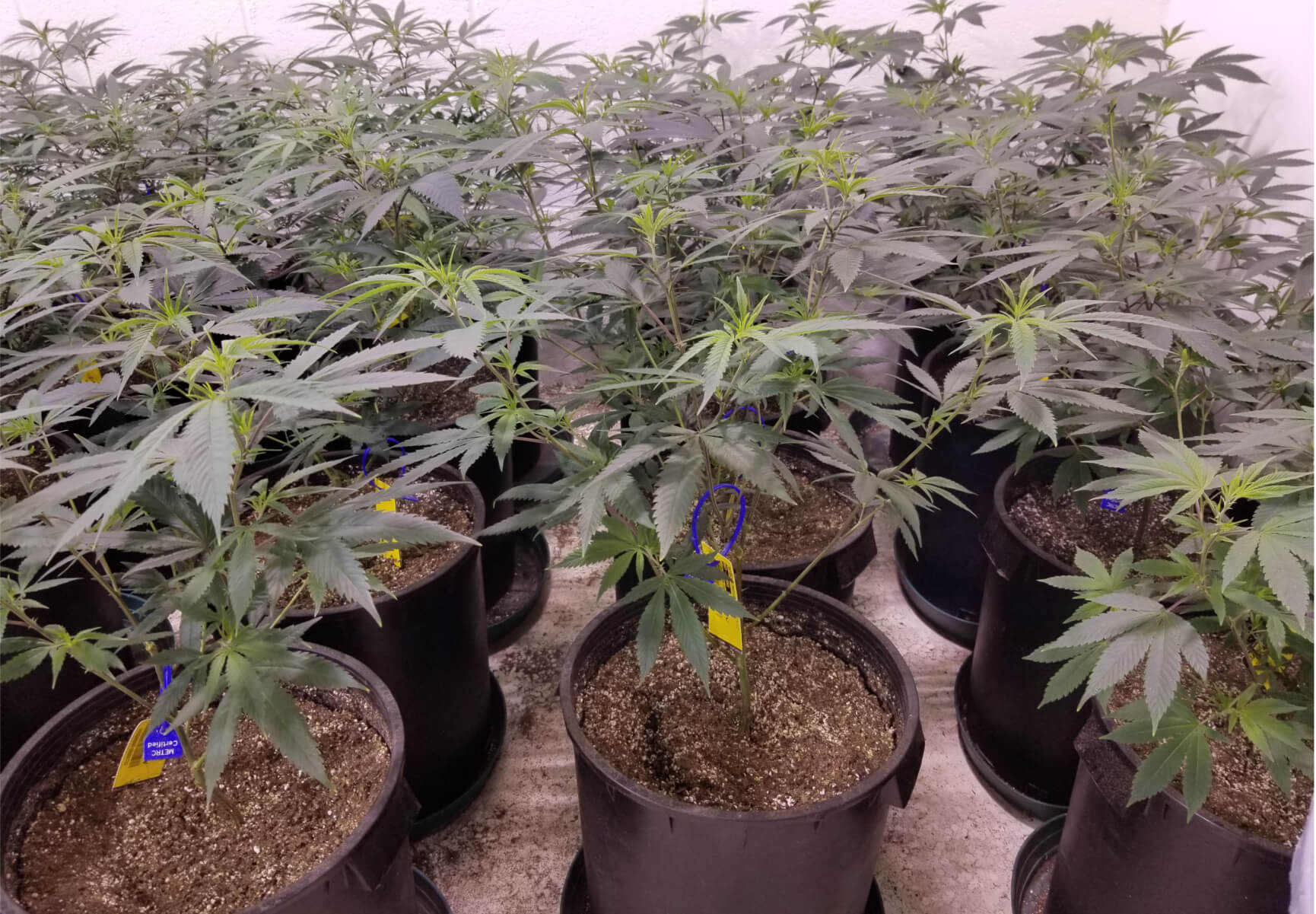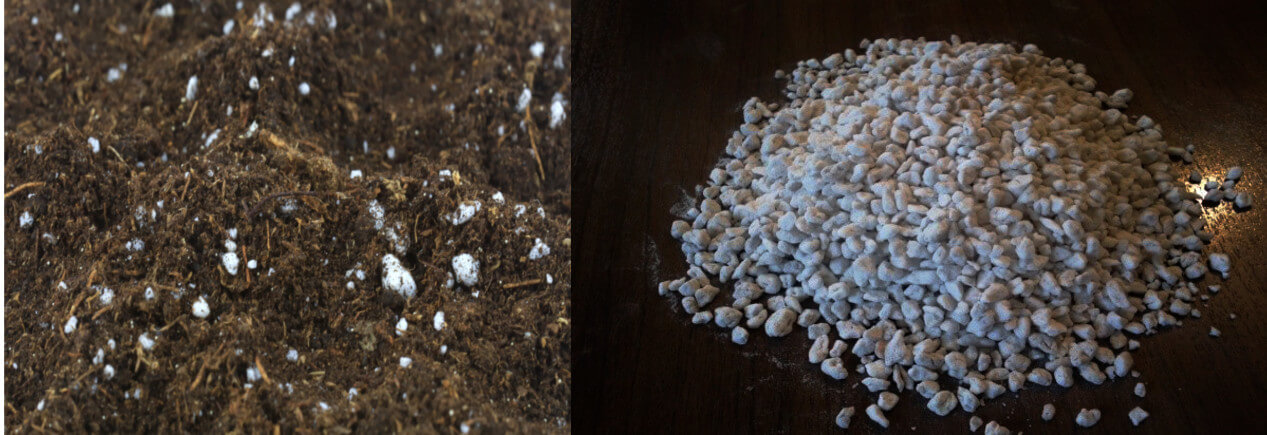- Perlite
- Vermiculite
The cultivation of cannabis indoors in a commercial setting involves consideration of numerous cultural controls (crop production practices that reduce pest pressure) and one of these controls is selecting the type of growing medium that will be used throughout all phases of the cannabis life cycle. Substrates used in containers for cannabis production are usually amended with other materials to provide the proper physical and chemical properties that promote plant growth. Amendments help to provide aeration and drainage within the growing media and are commonly used with coco coir and peat moss soilless mixes. They all work towards a common goal and that is providing an ideal environment for the plant’s root system. Amending a soil or soilless mix is not the same as burying or mulching. Amendments are commonly thoroughly mixed instead of left on the soil surface or clumped together underneath the substrate’s surface. Mulching is different from amending the substrate as it is meant to reduce evaporation, limit runoff, moderate the substrate temperature, and provide an aesthetic look.

Perlite
Perlite used in horticulture is a white, extremely porous rock that is formed through the solidification of volcanic material that is then processed through artificial heat treatment that expands it to a light powdery substance. Its porous properties make it a great amendment to improve aeration and drainage in soilless mixes. If you ever look at the ingredients of many coco or peat soilless mixes you will see a mixture of roughly 65-75% coco or peat to 25-35% perlite among other ingredients. More specifically it is a material consisting of fused sodium potassium aluminum silicate. Perlite is porous enough to float on water which is why it tends to float to the top of growing mediums used in containers.

Vermiculite
Vermiculite used in horticulture is also a white, porous material that can expand water retention capabilities as well as aid in aeration and drainage. Its improved water retention capabilities allow soilless mixes to hold more water which means perlite would be more preferred for iaeration when growing cannabis. Vermiculite is a magnesium aluminum silicate mineral created through hydrothermal treatment of biotite or phlogopite found in various types of rocks. Vermiculite also has buffering capacities and can supply potassium and magnesium nutrients to plants. This material is less durable than perlite and is less popular in soilless mixes used for container growing.
Comments powered by Talkyard.